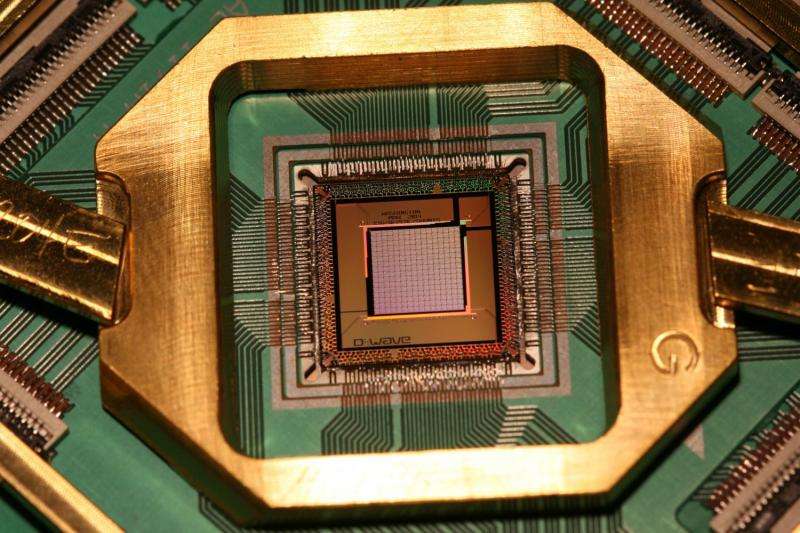D-Wave 2X 1000+ qubit processor
D-Wave Systems announced on Monday that it will provide its technology to Google, NASA and Universities Space Research Association's (USRA's) Quantum Artificial Intelligence Lab.
A unifying goal among the three is to study how quantum computing can advance artificial intelligence and machine learning. Quantum computing is also praised for use when coping with difficult optimization problems.
Cade Metz of Wired described the central points of this announcement. "Together with NASA and the Universities Space Research Association, or USRA, Google operates its quantum machine at the NASA Ames Research center not far from its Mountain View, California, headquarters. Today, D-Wave Systems, the Canadian company that built the machine, said it has agreed to provide regular upgrades to the system—keeping it 'state-of-the-art'—for the next seven years."
In 2010 the company released its first commercial system, D-Wave One. They doubled the number of qubits each year; in 2013 they shipped a 512-qubit D-Wave Two system. This year they announced general availability of the 1000+ qubit D-Wave 2X system.
D-Wave Systems considers this the most advanced quantum computer in the world.
"The Fridge" is a closed cycle dilution refrigerator. The superconducting processor generates no heat, said the company.
Cade Metz in Wired said "D-Wave says that most of the power needed to run the system is related to the extreme cooling. The entire system consumes about 15 kilowatts of power, while the quantum chip itself uses a fraction of a microwatt. 'Most of the power," Williams [Colin Williams, director of business development and strategic partnerships] says, 'is being used to run the refrigerator.' This means that the company can continue to improve its performance without significantly expanding the power it has to use."
The company described processing with D-Wave: "A lattice of 1000 tiny superconducting circuits, known as qubits, is chilled close to absolute zero to get quantum effects. A user models a problem into a search for the 'lowest point in a vast landscape.' The processor considers all possibilities simultaneously to determine the lowest energy required to form those relationships. Multiple solutions are returned to the user, scaled to show optimal answers."
"Since 2013, when the previous generation 500+ qubit D-Wave Two system was installed at NASA Ames," said the D-Wave Systems news release, "scientists at Google, NASA and USRA have been using it to explore the potential for quantum computing and its applicability to a broad range of complex problems such as web search, speech recognition, planning and scheduling, air-traffic management, robotic missions to other planets and support operations in mission control centers."
This is a multi-year agreement. David Bell, Director of USRA's Research Institute for Advanced Computer Science, said USRA was looking forward to the diversity of research to result by having universities and other research organizations from around the world conduct research using each generation of D-Wave systems.
As far as D-Wave Systems is concerned, the quantum computing era has begun. The company said that there are many complex computing problems that can't be addressed by conventional systems. Quantum computing can step in, with its potential to help solve some of the most complex technical, commercial, scientific, and national defense problems .
What in particular interests Google in this area? Google just like NASA and the USRA looks to quantum computing to help make advances in artificial intelligence, as AI can benefit from the way quantum computers work, said Fortune. "Google," said Derrick Harris, a senior writer at Fortune," is working on improving its search engine, speech recognition, and other capabilities through this research."
The company has locations in Vancouver, Palo Alto and Washington DC.
© 2015 Tech Xplore






















